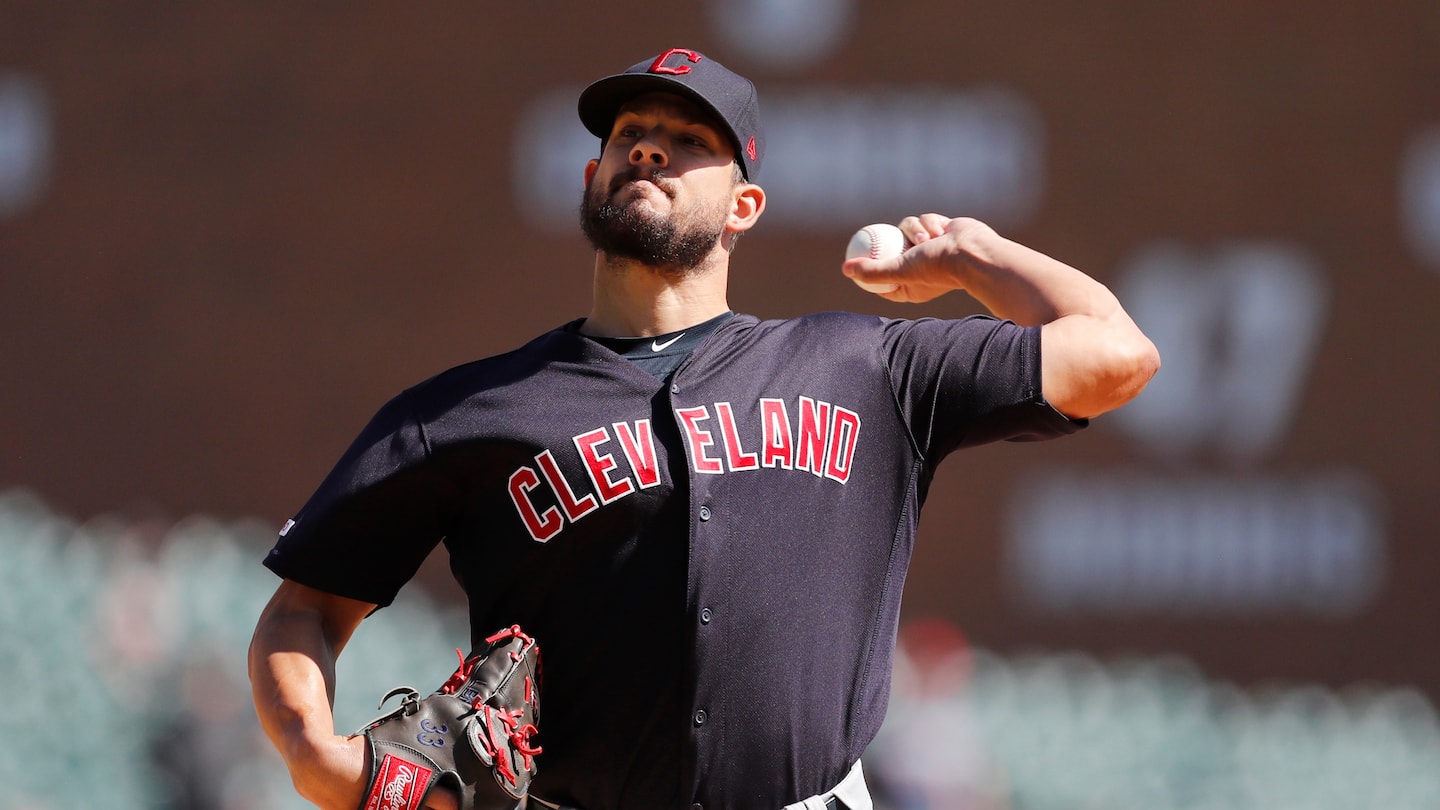Brad Hand’s arrival might end a Nationals tradition: The search for summer relief

Maybe — maybe — that trend is put on pause in 2021.
The Nationals’ addition of lefty Brad Hand over the weekend just might give them their best bullpen heading into the season since — well, let’s think about it. Since 2012, maybe, when they blitzed to their first division title with the “Clip-and-save” bullpen led by Tyler Clippard during the season and buoyed by Drew Storen’s return from injury late in the year, with stellar performances from everyone from Tom Gorzelanny to Sean Burnett to Ryan Mattheus to Craig Stammen in between.
Man, those are some blasts from the past, right? Even that crew got a boost from lefty Mike Gonzalez, a veteran signed off the scrap heap in May in a subtle midseason addition that strengthened a strength. The Nats finished third in the NL in bullpen ERA and walks plus hits per inning pitched.
The addition of Hand on a one-year, $10.5 million deal doesn’t guarantee there won’t be moves this June or July. But it sure lowers the probability that Manager Dave Martinez will need Rolaids in his back pocket 162 times a year. Whether Hand gets every save opportunity is immaterial — though he was a perfect 16 for 16 with Cleveland last year.
Rather, what Hand does is what the best relievers do when they arrive in a new ’pen: move everyone else into a more comfortable role. Daniel Hudson will forever have his place in Washington baseball history, because his strikeout of Michael Brantley ended with his glove tossed in the air and the 2019 World Series secured. It’s indelible and deserved.
But as important as Hudson’s addition was in the middle of that summer — when, it’s easy to forget, the Nationals’ bullpen was historically bad, and I’m not exaggerating — he is coming off an uneven, abbreviated 2020 in which he posted a 6.10 ERA over 21 appearances. Sending him to spring training — whenever that begins — as the primary closer option would have been somewhere between unforgivable and unwise, though not unprecedented.
Remember the nightmare start to 2017? As much as the ownership of the Lerner family spends on payroll, they tightened the purse strings that spring and wouldn’t allow for, say, free agent Greg Holland. So the Nats tried Blake Treinen as the closer. They tried Shawn Kelley as the closer. They tried Koda Glover, Enny Romero and Matt Albers at the end of games. On July 16, they led the NL East by 9½ games — but the bullpen had a 5.31 ERA, the worst in baseball. Every night was an ulcer-inducing adventure.
That deal injected confidence in an area the Nats needed it. Belief replaced doubt. They don’t all work out that way, of course, and people will always point to the 2015 trade for Jonathan Papelbon as unsettling for a team with the highest aspirations. What if, though, that confidence was already there in spring training?
Since 2016, when he led the majors with 82 appearances for San Diego, only 11 relievers (with at least 150 innings pitched) have posted an ERA better than Hand’s 2.70, and only 15 have a better WHIP. Among those better in both categories: right-hander Will Harris, who now inhabits the same bullpen as Hand. Those two alone give Martinez options to get key outs from either side — whether Hudson returns to his 2019 form or not.
Then comes what might have been the most pleasant development of an otherwise difficult, pandemic-shortened 2020: the rise of Tanner Rainey and Kyle Finnegan. Rainey, acquired for pitcher Tanner Roark in an offseason trade with Cincinnati two years ago, struck out nearly 43 percent of the batters he faced in his 20 appearances. He is a weapon with a 97-mph fastball and a power slider. Finnegan was a cunning signing as a minor league free agent out of the Oakland system and didn’t allow a run in 21 of his 25 outings. They enter 2021 not trying to establish themselves but rather trying to further themselves.
That’s not a bad place to start, a road map for Martinez from the sixth through the ninth, with plenty of mix-and-match options. Throw in Wander Suero, and there’s a decent choice for those games when the Nats already trail. It feels solid, which can’t be said for every January around here.
To be sure, bullpens are the most volatile of baseball commodities, and it’s unlikely that Hand, Hudson, Harris, Rainey and Finnegan will make it through a six-month season completely healthy and in fine form. There’s a certain vagabond nature to the job, and for all the familiarity Storen, Clippard and Stammen brought to those early contending Nats teams, the club has been on the lookout for new arms ever since.
Witness: The playoff roster in 2016 included zero relievers from the playoff roster in 2014. The playoff roster that won it all in 2019 included none of the relievers from the division winner just three years prior.
Hand is here on a one-year deal, so there’s a chance he fits into the year-to-year transience out beyond the right field wall at Nationals Park. But before spring begins, his arrival does more than just strengthen the current group of Nats relievers. It might put an end to the annual July ritual in which Washington, with the season in the balance, desperately hunts for bullpen help. Spring isn’t here yet, but the help is.






